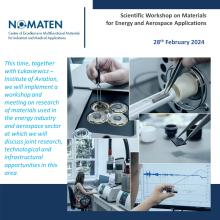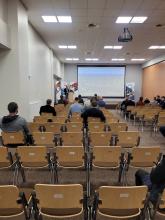Upcoming Events
Events
Past events
(archived seminars are in the news tab)
We are pleased to announce the NOMATEN Autumn School 2025, a four-day scientific event focused on advancing knowledge and fostering collaboration in the field of advanced materials.
Organized annually since 2021, the NOMATEN Autumn School brings together researchers from across Europe to share scientific results, methodological advances, and collaborative projects in a multidisciplinary environment. The 2025 edition marks the beginning of the second round of this event, with each of the core partner institutions – CEA (France), VTT (Finland), and NCBJ (Poland) – having already hosted once. We are excited to return to VTT in Espoo, Finland, a city known for its vibrant research ecosystem and natural beauty.












